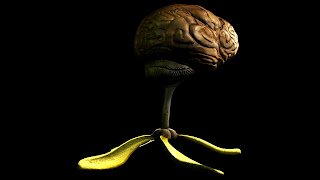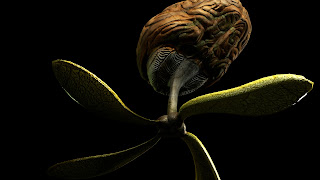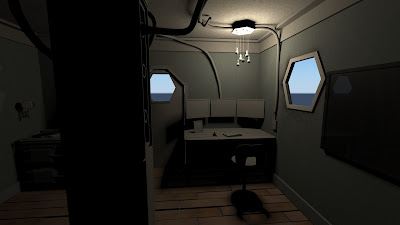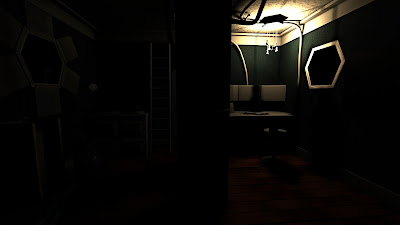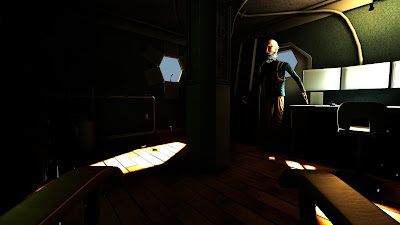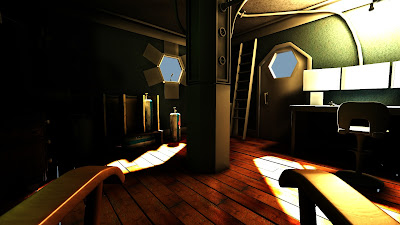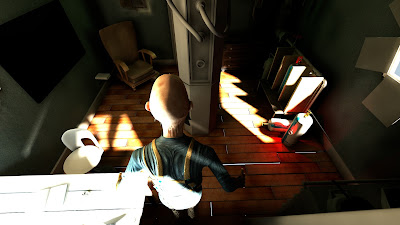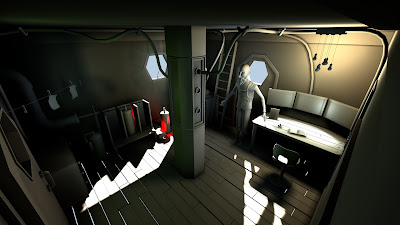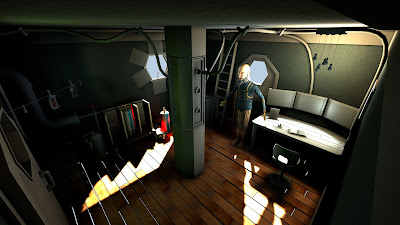Another week, another two shots reaching completion, granted these shots are from the same angle and required no animation but texturing, modelling, and lighting were all necessary to their success.
The majority of the week has been spent tweaking blockthroughs, adding camerashake, remaking cameras that have renamed themselves into a non-editable and incompatible naming convention, and then playblasting for Charlie to put into the edit. But in terms of more interesting and visual work:
I started by texturing the oxygen mask which Leonard wears when leaving the shed.
It all looks a bit WWII but I made sure the colours matched the browns of Leonard's gloves and the blues of his jacket, rather than go for a more futuristic spray painting mask.
I didn't want to have to sculpt this so I spent ages trying to cheat wrinkles in the bump map using Photoshop with limited success, I am however quite pleased with the creases in the leather.
I wanted to show a render of the mask being worn but dropbox has been hell the last 24 hours and while we still have a rigged version of the mask I cant seem to find a working version of the unrigged mask, its in there somewhere I just need to salvage it from the mess of sync points and backups.
The shot we aimed to render was this one (though from a higher angle) where we see the journal and the chalked message, we decided that in terms of visuals and symbolism this scene should take place at dawn, also the scene kicks of when its still dark so this made sense for plot consistency too. I wanted all that dawn colour to fill the shed and so set about the lighting workflow, first starting with just a lambert render to nail the palette.
I spent a while figuring how I wanted the sun to spill across the desk and decided that it should highlight where the writing will be on that nearest board. Like this:
This is the very useful line of mel script that helped me make those messy camera nodes deletable, also enabling me to delete the numerable image planes that were stuck to them.
David Jaffe gave a great talk at DICE on why games shouldn't tell stories. While the headline instantly makes me foam at the mouth with enragiatedness the title is misleading and the talk is impassioned, thoughtful, and funny. It talks more about why games shouldn't emulate film and should instead work to different strengths. How pertinent to my dissertation.
The majority of the week has been spent tweaking blockthroughs, adding camerashake, remaking cameras that have renamed themselves into a non-editable and incompatible naming convention, and then playblasting for Charlie to put into the edit. But in terms of more interesting and visual work:
I started by texturing the oxygen mask which Leonard wears when leaving the shed.
It all looks a bit WWII but I made sure the colours matched the browns of Leonard's gloves and the blues of his jacket, rather than go for a more futuristic spray painting mask.
 |
| Mask |
 |
| Final Mask |
 |
| Dawn Lights 1 |
 |
| Dawn Lights 2 |
From this angle you get a better sense of the room at this time of day and I'm really pleased with it, now that the books have been scattered around what resembles some kind of knowledge throne, the post it notes on the blackboard (courtesy of Jake), and the general clutter is in there it feels lived in and natural.
Here is the effect of the dawn lights I've stuck round the portholes, with final gather it cascades really nicely. Sometimes very soft depthmap shadows are like free ambient occlusion.
Pixel Propaganda
This is the very useful line of mel script that helped me make those messy camera nodes deletable, also enabling me to delete the numerable image planes that were stuck to them.
David Jaffe gave a great talk at DICE on why games shouldn't tell stories. While the headline instantly makes me foam at the mouth with enragiatedness the title is misleading and the talk is impassioned, thoughtful, and funny. It talks more about why games shouldn't emulate film and should instead work to different strengths. How pertinent to my dissertation.









